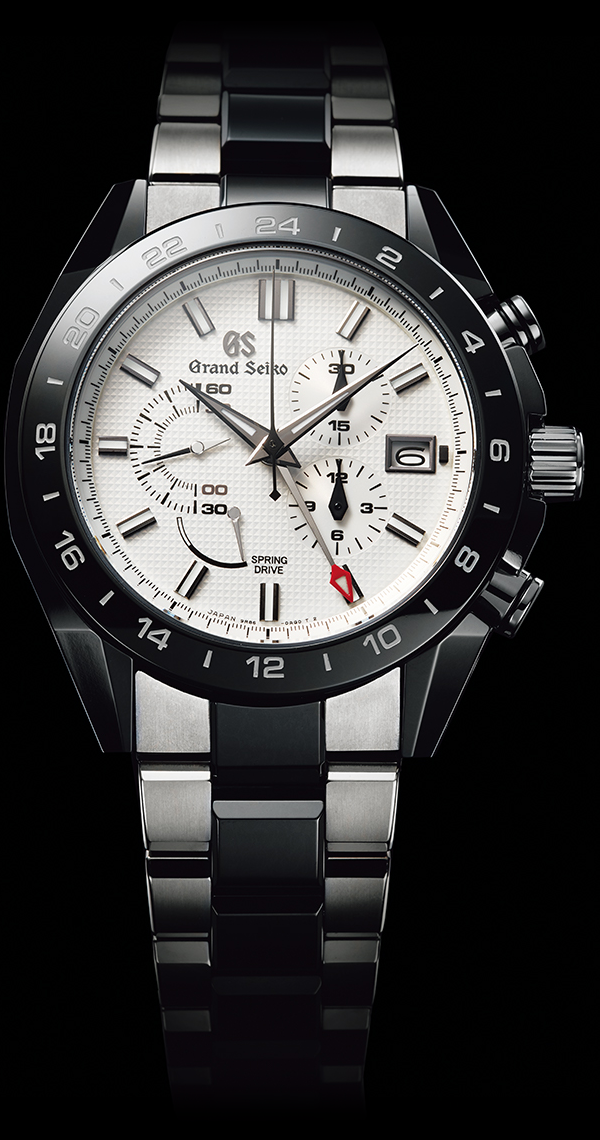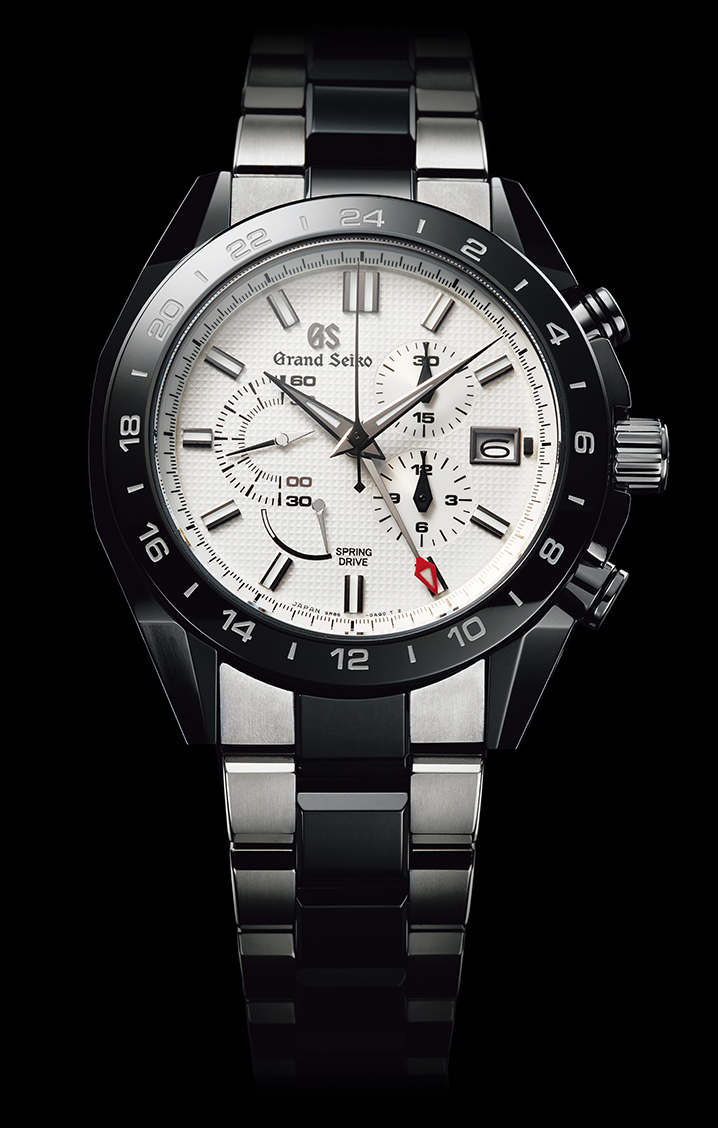Titanium and ceramic in perfect harmony
The long hands reaching to the edge of the dial enhance legibility. The 30-minute and 12-hour counters are placed at the right side of the watch, and on the left are a small second hand and power reserve indicator. This distinct separation of the chronograph and time of day functions was made to ensure that both are as legible as possible. The Spring Drive Chronograph in ceramic and high-intensity titanium.
The Spring Drive chronograph movement calibre 9R86, completed in 2007, has an average precision rate of ±15 seconds a month and, remarkably a power reserve of 72 hours even when the chronograph is in constant use. This is the same duration as that of the three hand Spring Drive calibre 9R65. When Calibre 9R65 was being developed, the platform was designed to allow the future inclusion of a chronograph. The movement is thus driven by a stable torque that provides more than enough power, enabling 72-hour operation even when the stopwatch is running.
Moreover, adoption of a vertical clutch system for power transmission, which evolved from Calibre 6139 made in 1969, prevents the seconds hand from jumping when the stopwatch is started. The two-stage operation of the chronograph button was designed in the light of the experience gained by operators of the official stopwatches used in the 1964 Tokyo Olympic Games. Once armed, the button requires 1.5 kilograms of down force, precisely the level needed to ensure that the button is not operated too slowly nor pushed by mistake.
The Spring Drive chronograph is, however, much more than a precision timing instrument. The fusion of ceramic and high-intensity titanium in the case expands to every link of the bracelet.


2The Spring Drive chronograph movement calibre 9R86, completed in 2007, has an average precision rate of ±15 seconds a month and, remarkably a power reserve of 72 hours even when the chronograph is in constant use. This is the same duration as that of the three hand Spring Drive calibre 9R65. When Calibre 9R65 was being developed, the platform was designed to allow the future inclusion of a chronograph. The movement is thus driven by a stable torque that provides more than enough power, enabling 72-hour operation even when the stopwatch is running.
Moreover, adoption of a vertical clutch system for power transmission, which evolved from Calibre 6139 made in 1969, prevents the seconds hand from jumping when the stopwatch is started. The two-stage operation of the chronograph button was designed in the light of the experience gained by operators of the official stopwatches used in the 1964 Tokyo Olympic Games. Once armed, the button requires 1.5 kilograms of down force, precisely the level needed to ensure that the button is not operated too slowly nor pushed by mistake.
The Spring Drive chronograph is, however, much more than a precision timing instrument. The fusion of ceramic and high-intensity titanium in the case expands to every link of the bracelet.
